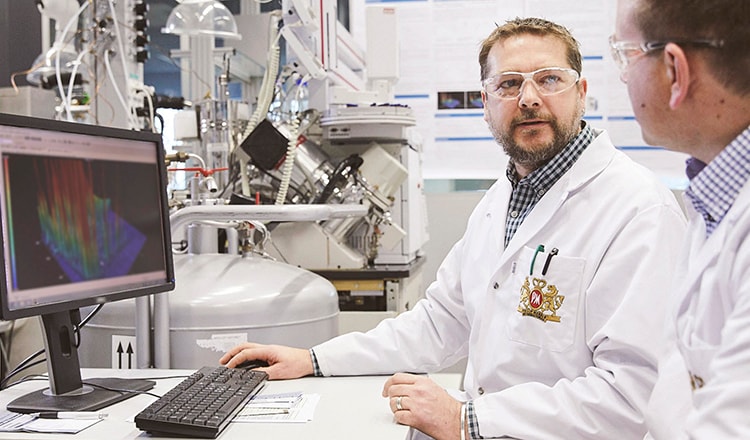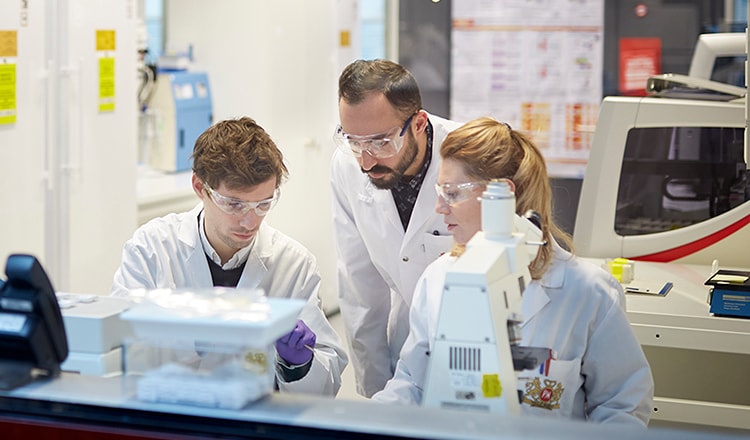The high levels of harmful chemicals produced when tobacco is burned is the main cause of smoking-related diseases. But scientifically substantiated smoke-free products don’t burn tobacco. As a result, they produce significantly lower levels of these chemicals compared to cigarettes.
These products aren’t risk-free—and contain nicotine, which is addictive—but they do represent a much better alternative for those adults who would otherwise continue smoking cigarettes.
Below are some of the positive short-term effects of switching to our smoke-free products compared to continued smoking:
Reduced levels of carbon monoxide in the blood
Burning tobacco produces carbon monoxide. Over time, exposure to even low levels of this chemical can impact exercise capacity.
Our leading heated tobacco product produces on average 98 percent less carbon monoxide than a cigarette.1 This results in carbon monoxide levels in the blood dropping dramatically within days of switching completely to our heated tobacco product.
In clinical studies, adult smokers who switched from cigarettes to our heated tobacco product experienced a significant drop in carbon monoxide levels in their blood after just 24 hours of switching—almost the same as the reduction observed in those
who quit tobacco and nicotine consumption altogether.2
Positive short term effects of switching to our better alternatives to smoking
The ideal scenario would be that every smoker would quit tomorrow and no one would use combustible cigarettes anymore, but it's not the reality.
So, we have spent the last decade really to try what I call characterizing our products.
Do we actually see in humans what we see in the laboratory?
And we have continued that journey with actually looking at biomarkers of potential harm.
We know there are thousands of chemicals in cigarette smoke,
many fewer in the aerosol from our smoke-free products.
And we can see that if someone switches
from smoking cigarettes to using smoke-free products for 6 and 12 months,
those levels of harmful markers go down.
Like biomarkers that would characterize inflammation, oxidative stress
and other precursors of disease.
I anticipate that if these people continue to use smoke-free products
instead of smoking cigarettes
ultimately their risk for disease will go down after 5, 10 years.
We are continuously trying
to improve the product and ultimately the consumer experience.
The reality is that we have about
1 billion smokers smoking today
and in the foreseeable future.
For these people tobacco harm reduction and smoke-free products
can be a tool to get away from combustible cigarettes.
What we need to do is to give the best information that we can to consumers.
We don't have anything to hide.
We know that our products are better than combusted cigarettes.
What I hope to see at the end of this journey is that our products
significantly reduce the risk and harm of smoking-related diseases.
That would be the ultimate goal.
Improved cholesterol levels
Smoking cigarettes changes the way the body metabolizes cholesterol. This can cause an increase in “bad” cholesterol (low-density lipoprotein) and a decrease in “good” cholesterol (high-density lipoprotein)—which helps to remove bad cholesterol.
Smoking also weakens the lining of the blood vessels, making it easier for cholesterol to build up on the artery walls, which can cause them to narrow and harden, increasing the risk of strokes and heart attacks.
In a study by PMI and non-PMI scientists, legal-age smokers who switched from cigarettes to our heated tobacco product were found to have increased levels of good cholesterol after three months, and that increase doubled after six months.3
Reduced oxidative stress
Cigarette use exposes smokers to a high level of oxidants, causing what’s known as “oxidative stress” (an imbalance between oxidants and antioxidants). This is linked to the development of conditions such as cardiovascular disease, and chronic obstructive pulmonary disease (COPD).
A study of 984 adult smokers found those who moved to heated tobacco products showed lower levels of oxidative stress three to six months after switching from cigarettes.3
The same study also showed that those who had switched reported less coughing less months after completely switching.3
Improved lung function
Lung function naturally declines as people age, but smoking accelerates this process. The toxicants in smoke can cause lungs to become inflamed and reduce airflow into and out of the lungs.
A clinical study of 984 adult smokers found that participants’ lung function was significantly improved six months after switching to heated tobacco products, compared to those who continued to smoke.3
Reduced staining of teeth and better breath
Besides the reduced disease risk and the observed short-term positive health impacts of switching to smoke-free alternatives to cigarettes, there are other perceived benefits reported by adults who have switched completely.
A non-clinical study on human teeth and dental composites concluded that heated tobacco products caused fewer stains on teeth than cigarettes,4 while legal-aged smokers who have switched to our heated tobacco product reported that their breath smells better.5
Better alternatives to cigarettes, backed by science
Switching from cigarettes to a smoke-free product will never be better for your health than stopping the use of all tobacco and nicotine-containing products. But for those who don’t quit, the totality of evidence suggests that making the switch is a better choice than continuing to smoke cigarettes.
For more detailed information about these positive short-term effects, visit PMI Science.
1 The difference between cigarette smoke and our heated tobacco aerosol (pmi.com)
2 Reduction in exposure to selected harmful and potentially harmful constituents approaching those observed upon smoking abstinence in smokers switching to the menthol Tobacco Heating System 2.2 for three months (Part 1) (pmiscience.com)
3 Effects of switching to a heat-not-burn tobacco product on biologically-relevant biomarkers to assess a candidate Modified Risk Tobacco Product: A randomized trial (pmiscience.com)
4 Tobacco heating system stains teeth less than cigarette smoke (pmiscience.com)
5 Source: Market research conducted in several countries with Iegal-age nicotine users that either currently smoke or smoked in the past







